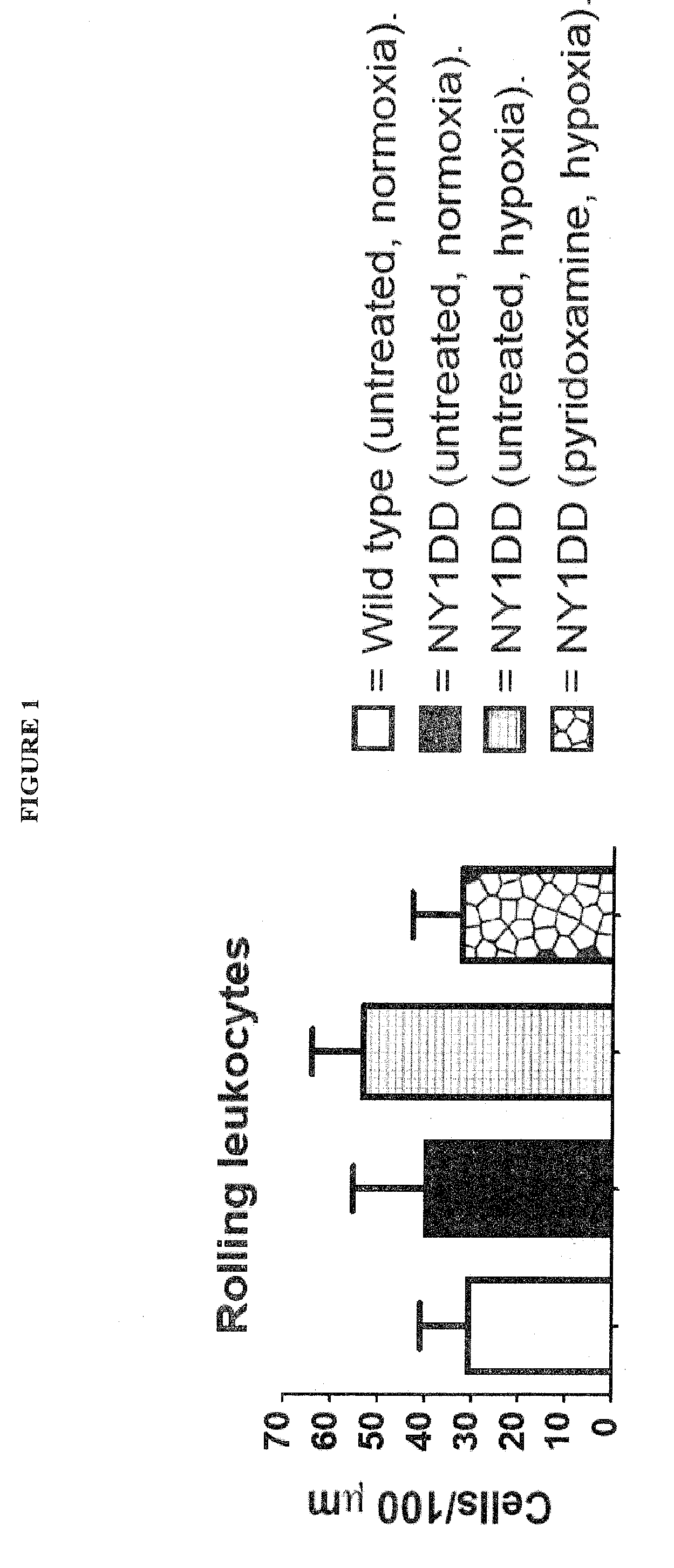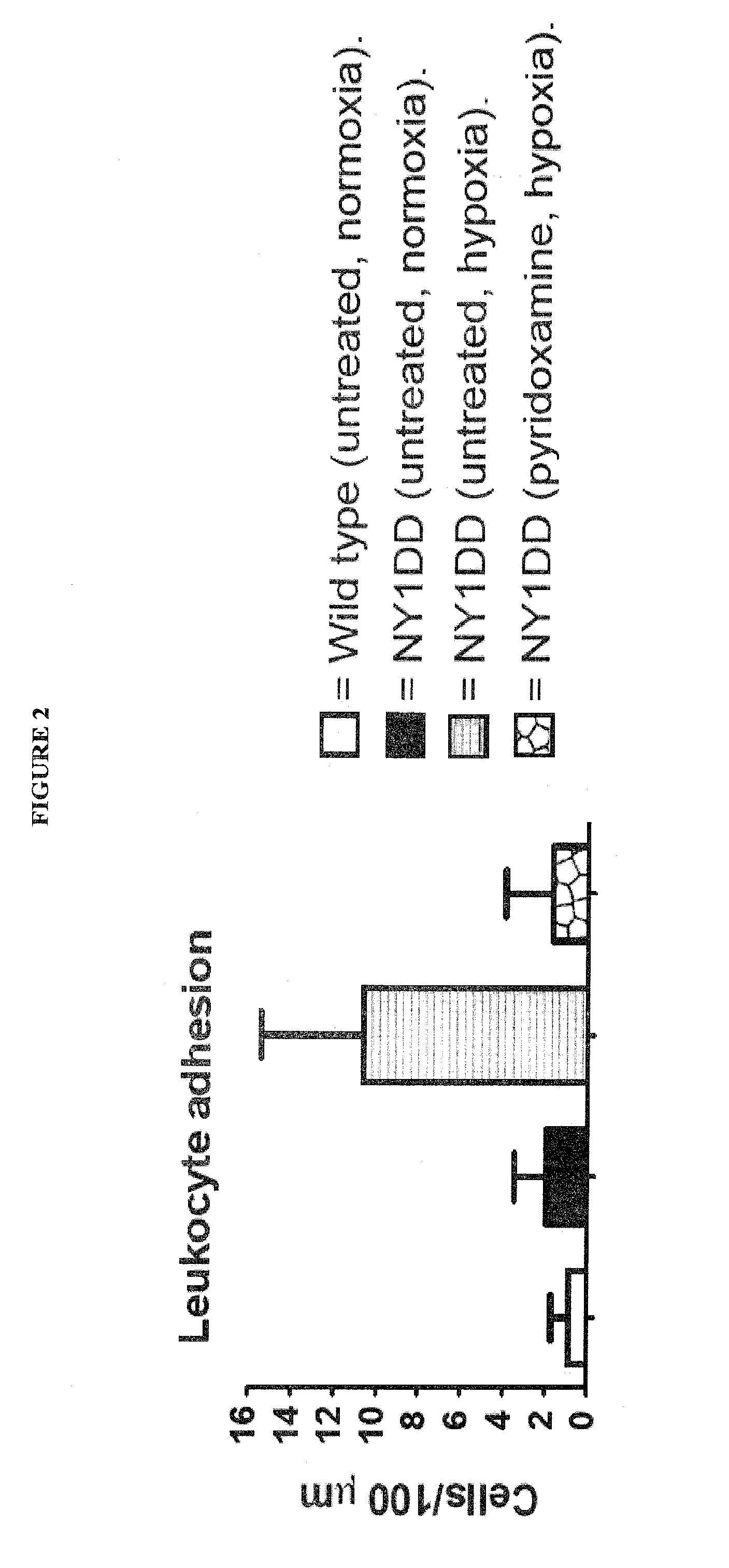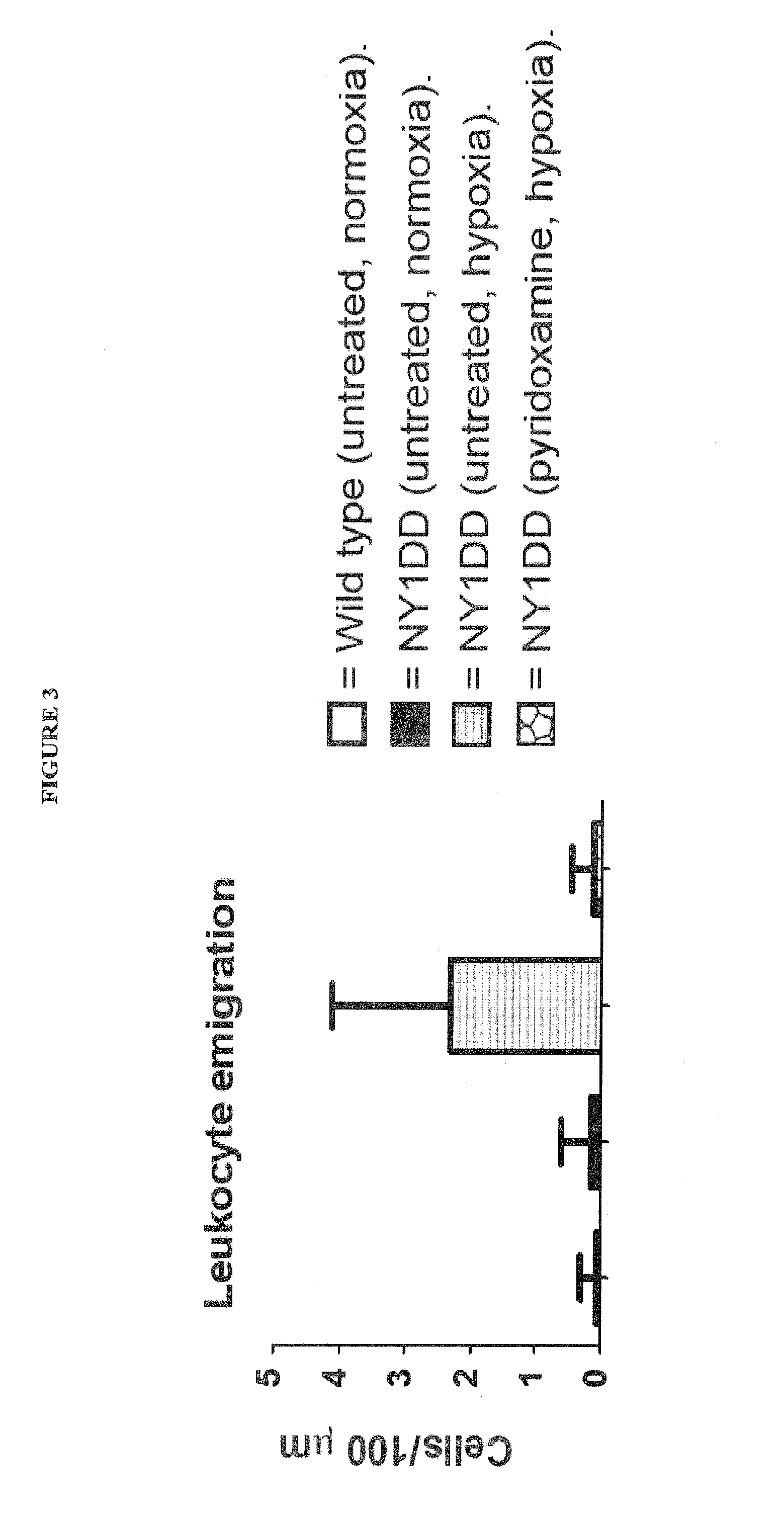Pyridoxamine for the treatment of sickle cell disease, thalassemia and related blood diseases
a technology of thalassemia and pyridoxamine, which is applied in the field of pyridoxamine for the treatment of sickle cell disease, thalassemia and related blood diseases, can solve the problems of no fda approved therapeutic options, achieve the effects of reducing tissue deoxyhemoglobin/oxyhemoglobin ratio, improving hemoglobin oxygenation, and improving hemoglobin oxygenation
- Summary
- Abstract
- Description
- Claims
- Application Information
AI Technical Summary
Benefits of technology
Problems solved by technology
Method used
Image
Examples
example 1
[0080]NY1DD mice (2×n=6) were exposed to hypoxia for 16 h (gas mixture=10% O2, 0.5% CO2 and balance N2). One group of NY1 DD was then be given an intraperitoneal (i.p.) dose of pyridoxamine (400 mg / kg), dissolved in phosphate buffered saline (PBS), prior to 3 h reoxygenation in ambient conditions. The second group of NY1 DD mice was put through the same hypoxia / reoxygenation process and given vehicle (PBS) as a negative control. Healthy C57 BL / 6J mice were used as healthy controls and were not exposed to hypoxia / reoxygenation stress. At the end of the reoxygenation period, the cremaster muscle was excised for intravital microscopy analysis. Intravital microscopy: Mice were anesthetized i.p. with 10% urethane and 2% α-chloralose in saline (6 ml / kg). The animals were tracheotomized and the left carotid artery cannulated to monitor systemic arterial pressure. The open cremaster muscle was prepared according to the method of Baez. [1] The surface of the open cremaster muscle was suffuse...
example 2
[0082]The experiments of Example 1 were repeated, except Berkeley low gamma mice were used.
example 3
[0083]The experiments of Example 1 were repeated, except Berkeley medium gamma mice were used to investigate the impact of increasing fetal hemoglobin concentrations and emulate a multimodal therapeutic strategy that would involve combinatorial administration of pyridoxamine and a fetal hemoglobin inducing agent.
PUM
| Property | Measurement | Unit |
|---|---|---|
| osmolarity | aaaaa | aaaaa |
| temperature | aaaaa | aaaaa |
| flow rate | aaaaa | aaaaa |
Abstract
Description
Claims
Application Information
 Login to View More
Login to View More - R&D
- Intellectual Property
- Life Sciences
- Materials
- Tech Scout
- Unparalleled Data Quality
- Higher Quality Content
- 60% Fewer Hallucinations
Browse by: Latest US Patents, China's latest patents, Technical Efficacy Thesaurus, Application Domain, Technology Topic, Popular Technical Reports.
© 2025 PatSnap. All rights reserved.Legal|Privacy policy|Modern Slavery Act Transparency Statement|Sitemap|About US| Contact US: help@patsnap.com



